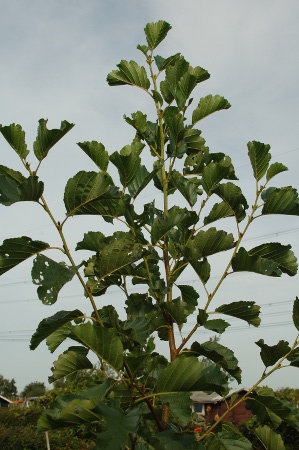
It’s still sort of early days here, but this past year I began experimenting with nitrogen fixing trees in the garden. In this case I’ve planted a number of black alder trees, like the one you see pictured above.
Many gardeners plant nitrogen fixing plants like peas or beans, or a cover crop like clover. As a rule, these grow and leave behind more nutrients than they consume, especially in the form of nitrogen. By turning these plants under, you also benefit from the organic material they leave in the ground.
Nitrogen fixing trees however serve a slightly different purpose. Nitrogen fixing trees are perennials, and so keep growing in your garden. They also have deep root structures, allowing them to fix nitrogen far below ground level.
Most nitrogen fixing trees are very hardy and fast growing. They tend to tolerate frequent cutting back, and so the idea is you cut them back as they start to get in the way of other plants. As well as producing nitrogen, nitrogen fixing trees can also consume nitrogen, and cutting them back is important to minimize their using up their own nitrogen. In particular, producing seeds is very nitrogen intensive, so you should cut them back before they do this.
As well as fixing nitrogen in the ground for future use, in many cases nitrogen fixing trees can feed other plants when their roots comingle. This has often found to be effective with fruit trees, and I intend to experiment with this.
I expect to see the benefits of these trees more in the coming years. What I did notice was shortly after planting, as the trees started to grow, quite a number of weeds grew agressively around the base of the plant indicating the availability of nitrogen. As the trees became more established, this was less obvious, presumably because they were fixing the nitrogen deeper in the ground.
I’m hoping the trees will improve the overall nitrogen levels in my garden, which in general are a bit low now. I think the reason nitrogen levels are low is because of previous excessive dependence on nitrogen based fertilizers, which have now washed away.


